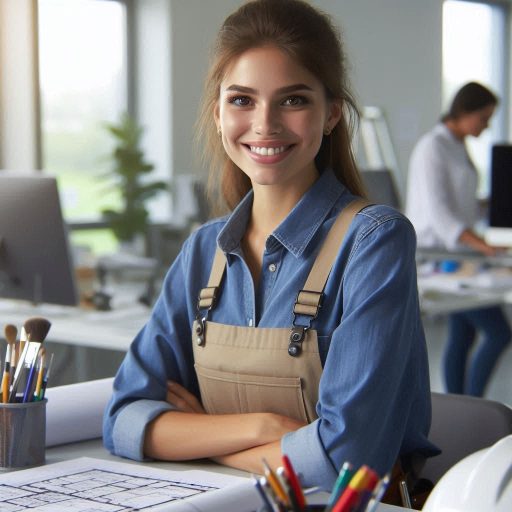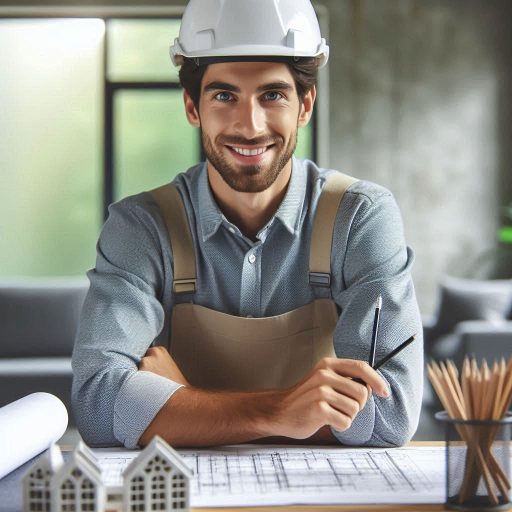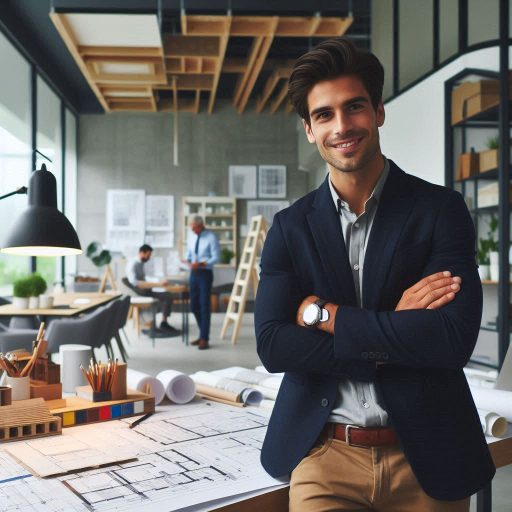Introduction
Art plays a crucial role in urban development by transforming cities into vibrant cultural hubs.
It shapes the aesthetics and culture of a city, making it unique and inviting to residents and visitors alike.
Art has the power to drive economic development by attracting tourism and creating job opportunities.
Additionally, it fosters community engagement by bringing people together to appreciate and participate in artistic events and installations.
Historical perspective on art in urban development
History of how art has been used in urban planning and development
Art has long played a crucial role in urban development.
Historically, cities have integrated art into their designs to enhance public spaces and reflect community values.
Ancient civilizations, such as the Greeks and Romans, utilized sculptures and murals to convey cultural narratives.
These early examples laid the groundwork for future urban planning.
Key examples of cities that have successfully integrated art into their urban landscapes
In the 19th century, cities like Paris and London began to prioritize public art.
The Eiffel Tower and the British Museum became symbols of national pride and identity.
Urban planners recognized that art could enhance civic life and attract tourism.
As cities expanded, integrating art into urban landscapes became essential for fostering community engagement.
Several modern cities exemplify successful integration of art into urban development.
Barcelona, for instance, showcases Antoni Gaudí’s unique architecture, transforming the city into a living gallery.
Public art installations, such as the famous mural on the Berlin Wall, symbolize resilience and unity.
These artistic expressions create a sense of belonging and community among residents.
Impact of art on the overall vibe and identity of a city
Art significantly impacts the overall vibe and identity of a city.
It adds character to neighborhoods, making them more inviting.
Vibrant murals, sculptures, and performances encourage public interaction and create shared experiences.
Art can transform neglected areas into lively cultural hubs, fostering social cohesion and economic growth.
Transform Your Career Today
Unlock a personalized career strategy that drives real results. Get tailored advice and a roadmap designed just for you.
Start NowIncorporating art into urban planning promotes a city’s unique identity.
It invites residents and visitors to engage with their surroundings.
As cities continue to evolve, the role of art will remain vital in shaping vibrant, inclusive urban spaces.
Embracing this historical perspective allows us to appreciate the ongoing relationship between art and urban development.
Read: How to Choose the Right Design College for You
Economic benefits of incorporating art into urban development
When it comes to urban development, incorporating art has numerous economic benefits that cannot be overlooked.
Let’s delve into how art plays a crucial role in boosting the economy of cities:
Attracting Tourists and Boosting Local Businesses
Art has the power to draw tourists to a city, whether it be through public art installations, galleries, or museums.
Tourists are often willing to spend money on art-related experiences such as visiting exhibitions, purchasing artwork, or attending cultural events.
This influx of tourism can have a positive impact on the local economy by supporting businesses in the hospitality, retail, and entertainment sectors.
Additionally, art can help create a unique identity for a city, making it stand out and attract visitors who are seeking a cultural experience.
Revitalizing Neighborhoods and Increasing Property Values
Art can transform neglected or underdeveloped neighborhoods into vibrant and attractive areas.
Public art projects, street murals, and cultural events can revitalize a neighborhood, making it more desirable for residents and businesses.
As a result, property values tend to increase in areas where art is prevalent, leading to economic growth and investment.
By incorporating art into urban planning, cities can create a sense of community pride and ownership, which can further enhance property values and contribute to the overall economic well-being of the neighborhood.
Examples of Art-Driven Initiatives that have Led to Economic Growth
Several cities around the world have successfully leveraged art as a tool for economic development.
For example, the city of Bilbao in Spain saw a significant increase in tourism and economic activity after the construction of the Guggenheim Museum, which became a cultural landmark and a symbol of urban regeneration.
Similarly, the Wynwood Walls project in Miami transformed a once-derelict neighborhood into a thriving arts district, attracting visitors, businesses, and investment.
These examples demonstrate how art-driven initiatives can have a tangible impact on the economic prosperity of cities.
Showcase Your Business Today
Reach thousands of readers actively exploring professional services. Publish your business profile and grow your audience now.
Publish NowIn essence, the economic benefits of incorporating art into urban development are vast and multifaceted.
From attracting tourists and boosting local businesses to revitalizing neighborhoods and increasing property values, art has the potential to drive economic growth and prosperity in cities.
By investing in art and supporting creative initiatives, cities can not only enhance their cultural vibrancy but also stimulate economic development and improve the quality of life for residents and visitors alike.
Read: Interior Design Tips for Small Spaces
Social and cultural impact of art in urban development
Art plays a crucial role in shaping the social and cultural landscape of urban development.
Let’s delve into the various ways in which art influences and enhances the fabric of a city:
Fostering a Sense of Community and Pride
Art installations in public spaces create gathering spots for residents to connect and interact.
Cultural events and festivals centered around art bring people together, fostering a sense of belonging.
Art projects involving community participation empower residents to take ownership of their surroundings.
Promoting Inclusivity and Diversity
Public art displays the diversity of cultures, backgrounds, and experiences within a city.
Artistic expression serves as a platform for marginalized groups to voice their perspectives and stories.
Inclusive art initiatives break down barriers and create spaces where everyone feels welcome.
Preserving and Celebrating Cultural Heritage
Art serves as a visual representation of a city’s history, traditions, and customs.
Public art installations can commemorate significant events and figures from the past.
Artistic expressions rooted in cultural heritage contribute to the unique identity of a city.
The social and cultural impact of art in urban development goes beyond aesthetics; it has the power to unite communities, promote diversity, and preserve the rich heritage of a city.
By incorporating art into the urban landscape, cities can create vibrant, inclusive, and culturally rich environments for their residents.
Read: Famous Art Movements Influencing Modern Design

Environmental benefits of integrating art into urban development
How art can contribute to sustainability efforts in urban planning
Art can help with sustainability efforts by incorporating eco-friendly materials and practices.
Green spaces created through art installations can improve air quality and reduce the heat island effect.
Art can raise awareness about environmental issues, such as climate change and pollution.
Use of art in creating green spaces and promoting environmental awareness
The use of murals, sculptures, and interactive installations in public spaces can engage communities in environmental conversations.
Urban art projects like community gardens or recycled material installations can inspire sustainable practices.
Artists can work with urban planners to incorporate green infrastructure like rain gardens and bioswales.
Artistic interventions in urban design can encourage people to adopt eco-friendly habits in their daily lives.
Transportation-themed art installations can promote walking, biking, and public transportation as sustainable modes of travel.
Art can transform neglected urban areas into vibrant, sustainable hubs by beautifying and revitalizing spaces.
Examples of art installations that have helped raise awareness about environmental issues in cities
Examples of art installations promoting environmental awareness include the High Line in New York City, which transformed an abandoned railway into a greenway.
- The Water Lilies project in Paris showcased floating gardens on the Seine to raise awareness about water conservation.
- The Solar Tree sculpture in San Jose, California, educates the public about renewable energy and sustainable technologies.
- The Trash People installation in Rome used recycled materials to highlight the issue of waste management in urban environments.
Read: Top Skills Required for Success in Architecture
Challenges and considerations in incorporating art into urban development
Potential hurdles
Incorporating art into urban development presents several challenges.
Funding constraints often hinder projects.
Local governments may prioritize essential services over artistic initiatives.
Securing grants or sponsorships can prove difficult.
Community resistance can also arise, especially if residents feel disconnected from artistic choices.
Engaging the community early in the process is crucial.
Residents may fear that art will not reflect their values or identity.
Importance of balancing artistic vision with practical considerations in urban planning
Balancing artistic vision with practical considerations is vital in urban planning.
While creativity fuels vibrant spaces, functionality cannot be overlooked.
Urban planners must consider maintenance costs and durability of art installations.
Art should enhance public spaces without causing logistical issues.
Showcase Your Business Today
Reach thousands of readers actively exploring professional services. Publish your business profile and grow your audience now.
Publish NowPlanners need to ensure that art complements existing infrastructure and community needs.
Collaborating with artists who understand urban challenges can bridge the gap between vision and practicality.
Overcoming challenges and ensuring the successful integration of art in urban development projects
To overcome these challenges, community involvement is essential.
Organizing workshops allows residents to express their ideas and concerns.
Creating a platform for dialogue fosters trust and collaboration.
Utilizing local artists can also help, as they often understand the community’s culture and preferences.
Building partnerships with local businesses can increase funding opportunities.
Businesses may see art as a way to attract customers, benefiting everyone.
Integrating art into urban development requires flexibility and creativity.
Planners should explore temporary installations to gauge community reactions.
Pilot projects can help identify potential issues before larger commitments are made.
Using online platforms for feedback can engage a broader audience.
Ultimately, a collaborative approach will ensure that art enhances urban spaces.
Art can transform cities when thoughtfully integrated, reflecting the community’s spirit and identity while meeting practical needs.
Best Practices for Incorporating Art into Urban Development Projects
Tips for city planners and developers on how to effectively incorporate art into their projects
- When incorporating art into urban development projects, consider the local culture and history.
- Seek input from artists, community members, and stakeholders early in the planning process.
- Provide spaces for local artists to showcase their work in public areas like parks and plazas.
- Use public art to create a sense of place and identity within the community.
- Incorporate art into transportation infrastructure, such as murals on subway walls or sculptures at bus stops.
- Consider the maintenance and sustainability of art installations to ensure long-term impact.
- Collaborate with local schools and educational institutions to involve students in art projects.
- Host community art workshops and events to engage residents in the creative process.
- Use art to address social issues and promote dialogue within the community.
- Evaluate the economic impact of art on urban development, such as increased tourism and property values.
Importance of Involving Artists, Community Members, and Stakeholders
Involving artists ensures that projects are culturally relevant and reflective of the community’s values.
Community members provide valuable input on the types of art that resonate with them.
Stakeholders, such as local businesses and government officials, can help secure funding and support for art projects.
Collaboration leads to a sense of ownership and pride in the community’s public spaces.
Successful Case Studies of Cities that Have Integrated Art into Urban Development Initiatives
- Barcelona, Spain: Known for its innovative urban art projects, including the transformation of old factories into cultural hubs.
- Portland, Oregon: A leader in public art installations, with initiatives like the Portland Street Art Alliance.
- Medellín, Colombia: Used art to revitalize formerly dangerous neighborhoods, leading to social and economic improvements.
- Montreal, Canada: Has integrated art into public transportation systems, creating unique and engaging commuter experiences.
- Melbourne, Australia: Fosters a vibrant street art scene, with laneways and alleys transformed into outdoor galleries.
By following these best practices, cities can effectively incorporate art into urban development projects, creating more vibrant, inclusive, and culturally rich communities.
Conclusion
Art plays a crucial role in urban development by enhancing the aesthetics and cultural identity of cities.
It fosters creativity, encourages community engagement, and promotes social cohesion.
Artistic initiatives, such as public murals, sculptures, and installations, contribute to the revitalization of urban spaces and the improvement of quality of life for residents.
Moreover, art can serve as a tool for placemaking, creating unique and memorable experiences that attract visitors and foster economic growth.
By integrating art into urban planning and design, cities can create vibrant, sustainable, and inclusive environments that reflect the diverse interests and values of their communities.
Art has the power to transform neglected areas into thriving cultural hubs, fostering a sense of pride and ownership among residents.
It is essential for policymakers, urban planners, and developers to recognize the significance of art in shaping the future of our cities.
By investing in art and cultural projects, cities can create dynamic and resilient urban landscapes that inspire creativity, innovation, and social change.
Therefore, it is crucial for individuals to explore the potential of art in urban development and actively participate in shaping the future of their communities.
By supporting local artists, attending cultural events, and advocating for public art initiatives, we can collectively contribute to the creation of more livable, prosperous, and culturally diverse cities.
[E-Books for Sale]
The Big Book of 500 High-Paying Jobs in America: Unlock Your Earning Potential
$19.99 • 500 High-Paying Jobs • 330 pages
Explore 500 high-paying jobs in America and learn how to boost your career, earn more, and achieve success!
See All 500 High-Paying Jobs of this E-Book
1001 Professions Without a Degree: High-Paying American Jobs You Can Start Now
$19.99 • 1001 Professions Without a Degree • 174 pages
Discover 1001 high-paying jobs without a degree! Unlock career tips, skills, and success strategies for just $19.99!




